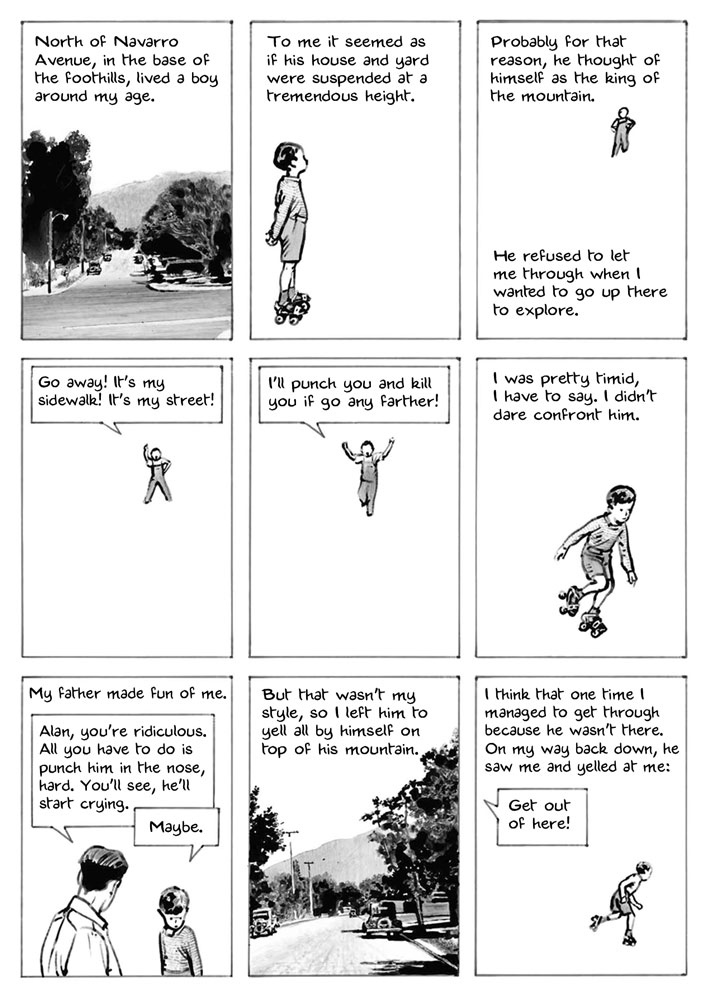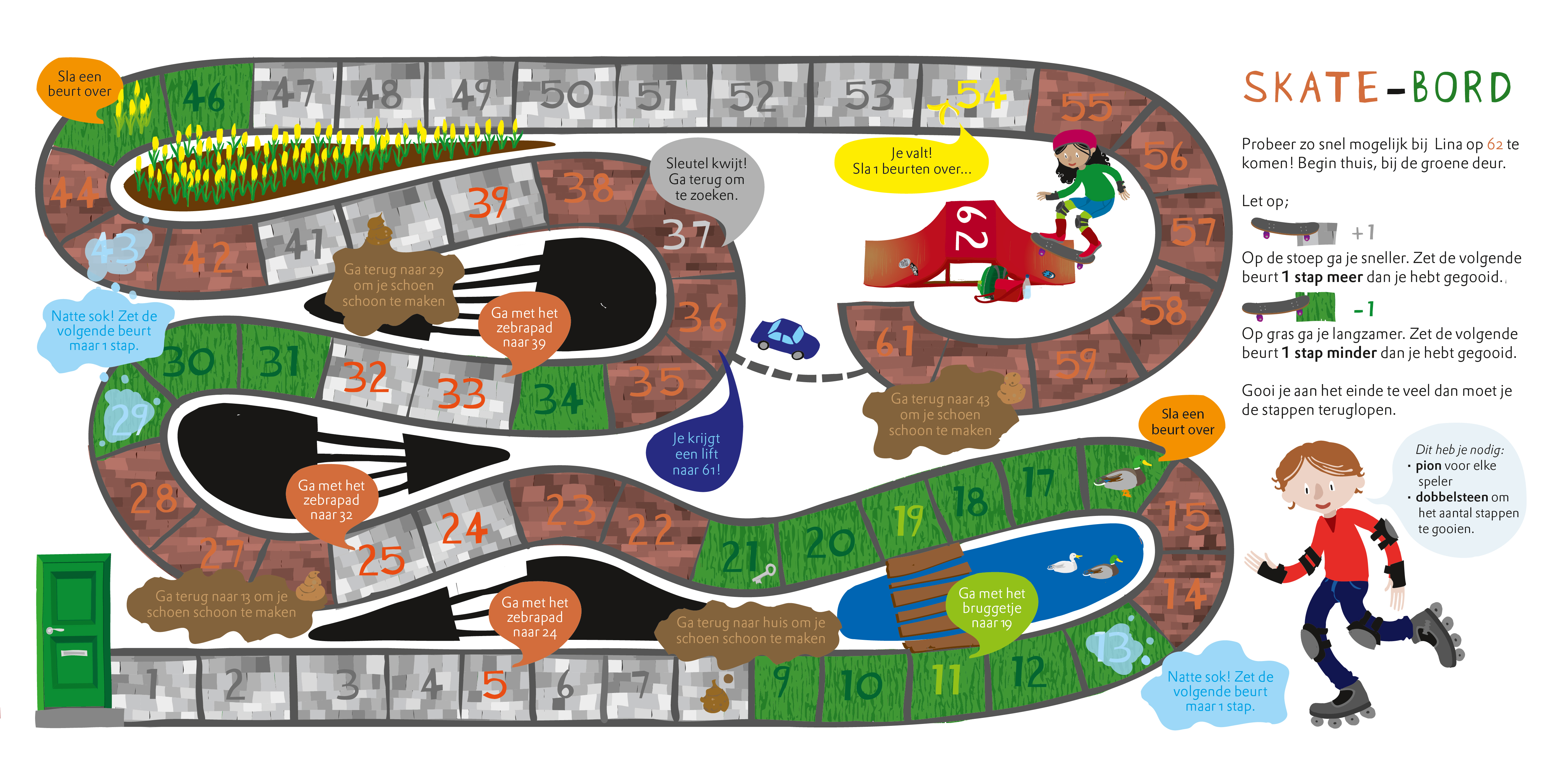The Power and Dangers of the Law of Simplicity
The Law of Simplicity or Prägnanz

Chris Ware, Jimmy Corrigan: The Smartest Kid on Earth (2000)
The Law of Simplicity is also known as the Law of Prägnanz. Although ‘Prägnanz’ would be a perfect name for a German scientist real or fictional, it is not (not yet anyway). It is a German term that can be translated as ‘succinctness’ or ‘concisness’. The art of keeping it simple to enhance communication by eliminating redundancy without omitting important information.
Chris Ware uses a wonderfully stylized (yet very precise) way of representing things. An eye becomes a speck, a brow just a delicate line. Facial expressions are accomplished with a bare minimum of information. His protagonist Jimmy Corrigan comes to (a pitiful) life, his posture revealing more than any amount of added information would do.
Our brain likes it simple. If less important information or background information can be minimized, simplicity in framing can bring the eye directly where it is desired. The eye preferably follows the simplest way or the most obvious path or pattern.
Even if simplicity is not provided the mind will analyse what it sees (or experiences for that matter) chopping it to manageable bits (or simple terms). Complex things will be dissected and seen in simpler forms. Preferably forms we recognize.
Our brain loves symbols. And symbols can be very powerful tools in storytelling. It can help convey ideas faster giving the mind to focus on different things.
The fact that we understand symbols in a quite universal way can simplify some aspect of storytelling. An oval with an eye is a head, a square with a triangle on top of it is a house
In comics symbols are an often used resulting in a style that is easily understood (Like the style Chris Ware uses in Jimmy Corrigan: The Smartest Kid on Earth (2000) (US Link)) and can be read at some speed, helping the eye keep a steady pace and keeping the illusion of passing of time alive. But the use of symbols can do so much more guiding the mind toward concepts and abstract ideas.
Picasso at some point choose to work with symbols (even though he was an excellent draftsman) it gave him room to play with other concepts, like time and space. An eye was represented giving the idea of an eye not an exact description. Our brain gets the symbol immediately and understands the rest of the painting in the same symbolic language, looking for the face to go with the eye and the hair.
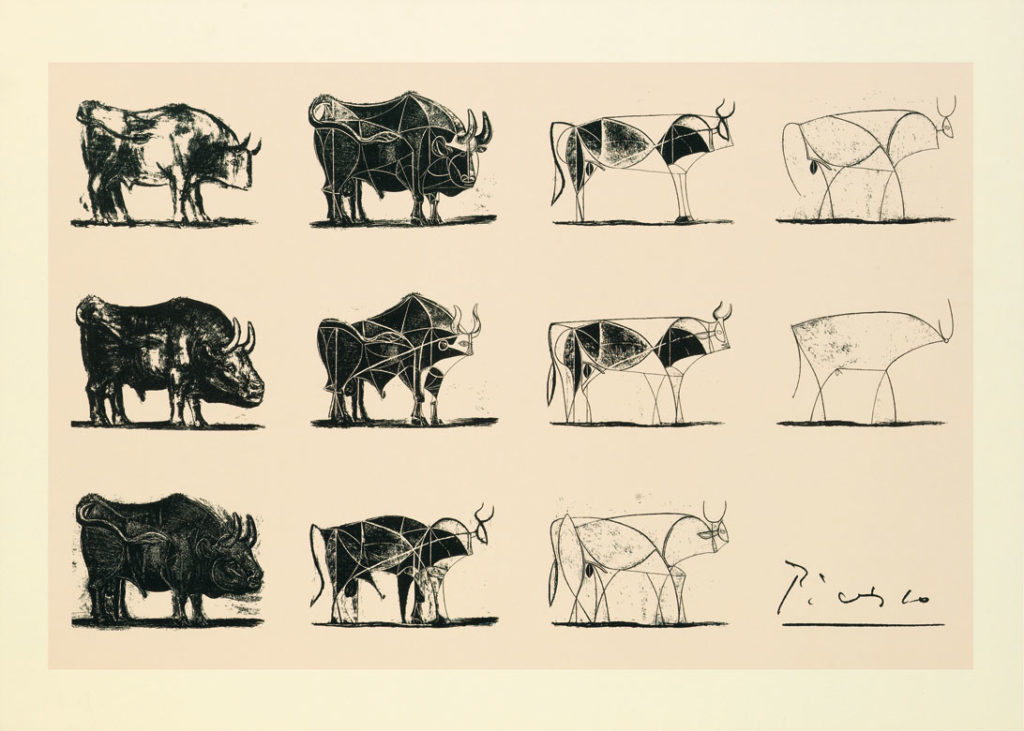
Pablo Picasso, Bull (1945) A series of eleven lithographs published in:
Picasso: Forty Nine (New) Lithographs toghether with Honore Balzac’s the Hidden Masterpiece in the form of an allegory (US Link)
“In the old days pictures went forward toward completion by stages. Every day brought something new. A picture used to be a sum of additions. In my case a picture is a sum of destructions. I do a picture – then destroy it. In the end, though, nothing is lost… But there is a very odd thing – to notice that basically a picture doesn’t change, that the first ‘vision’ remains almost intact, in spite of appearances…”

Pablo Picasso, Stylized portrait of Jacqueline (1962)
Lars von Trier uses our ability to this more abstract way of seeing thing in Dogville (2004) (US Link). He draws the whole decor on the ground, like a floor plan, a city map. We understand it is a village, houses a place where people live. This is a simple way of representing something (for the story) unnecessary complex.
How the houses look doesn’t matter for the story. The story is about human relationships. These relationships get extra attention because everyone is visible all the time; no wall to hide behind. The symbolic design of the ‘decor’ gives the story a symbolic load; the lives we’re looking at, even though they might have been persons with names get an symbolic value too, telling a story not about humans but mankind.

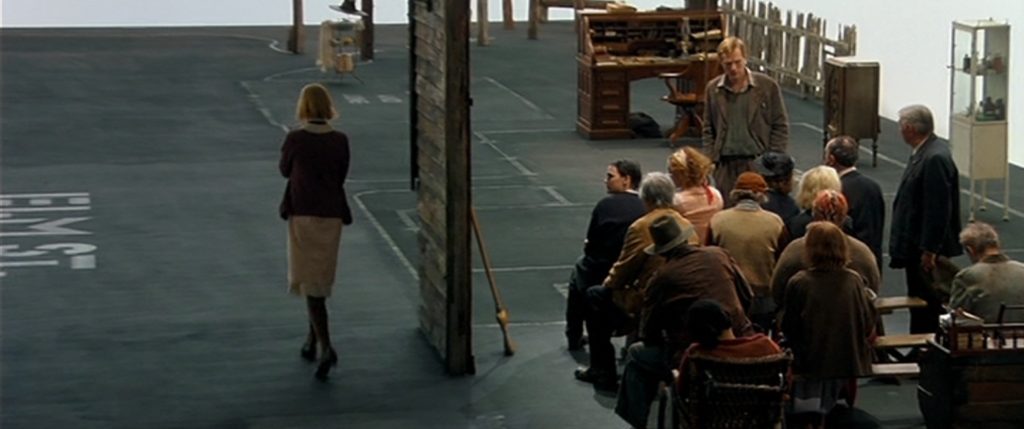
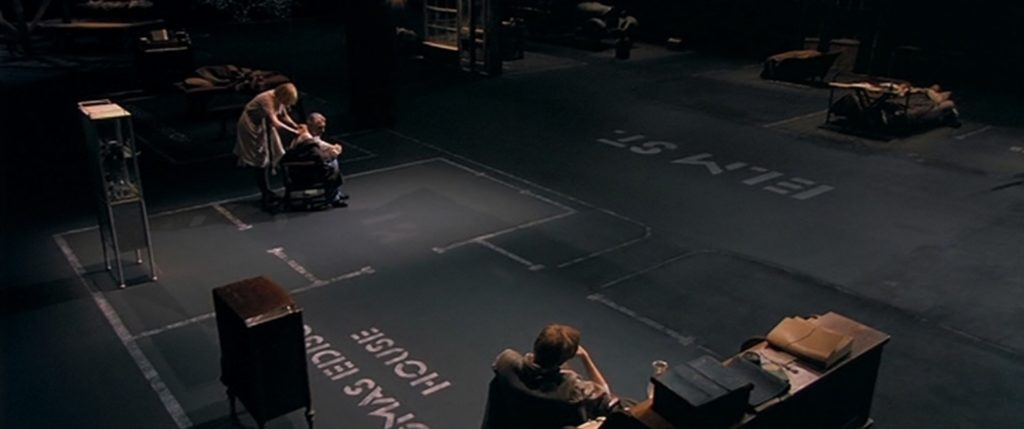

Lars von Trier, Dogville (2004)
In the last shot it’s not clear if they are in the same room or not. But that doesn’t matter. The lives of these people influence each other, what one does affects the other, walls no longer protect them.
But symbols don’t have to take the shape or form of simplified reality, they can be more abstract and work on a more unconscious level. Emmanuel Guibert uses the same white in How the World Was: A California Childhood (US Link), the biography of WWII Veteran Alan Cope. He uses it to focus on the human interactions in the book; His mom dressing him, his grandpa talking him on long walks, a neighbourhood boy bullying him. These are the things that matter, where these scenes took place is just background, just the setting. He shows us what’s worth remembering.
White background doesn’t take on the same meaning in every context, though. The white in the famous and classic silent movie The Passion of Joan of Arc (1928) gets a totally different depth. Director Carl Theodore Dreyer uses the law of simplicity and counts on the viewers understanding of symbols and uses these visual keys to show context in his movie. He uses this method to illustrate the power of the church. But he arrives at this affect through different reasoning. He said that once he understood what the story is about he wanted to show nothing but that. He didn’t want to make an epic drama or a bio pic. He wanted to show Joan conviction.
He tossed all but the necessities to accomplish this goal; he tossed the original script deciding to use the archives and transcriptions of the real trail. Shooting everything in close-up. Focussing on faces and the facial expressions of all involved. Laying bare the innocence and bravery of Joan, the misguided and heartless corruption of the 29 cross-examinations that put her trough trail and torture. (Dreyer and Editor Marguerite Beaugé used 1500 cuts to get this cross-examinations effect not to create the hectic atmosphere I mentioned in the post on continuity, but the feeling she is surrounded and has nowhere to go.)
The power of the church is illustrated in a sober yet very effective way. Using high and low angles to show who is in power and who is overruled and powerless. The background is simple a occasional Gothic window pane sets the scene the angle the framing adding meaning; the church rules all. But what is ‘the church’ it is left ‘blank’ and gets its ‘face’ from the people representing it.
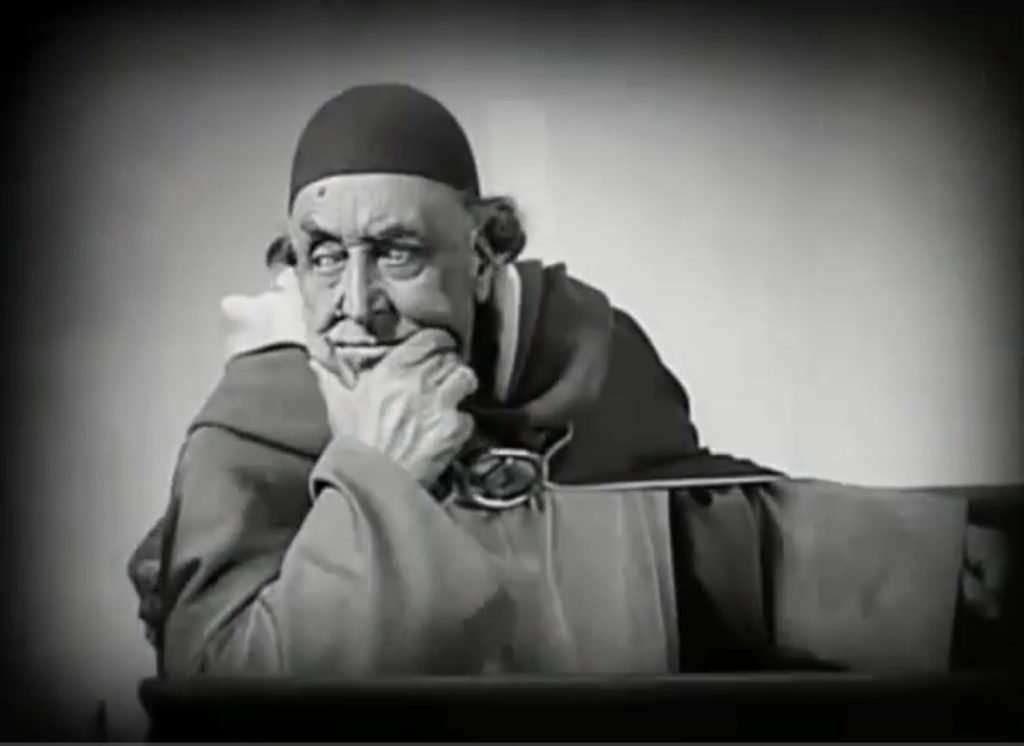
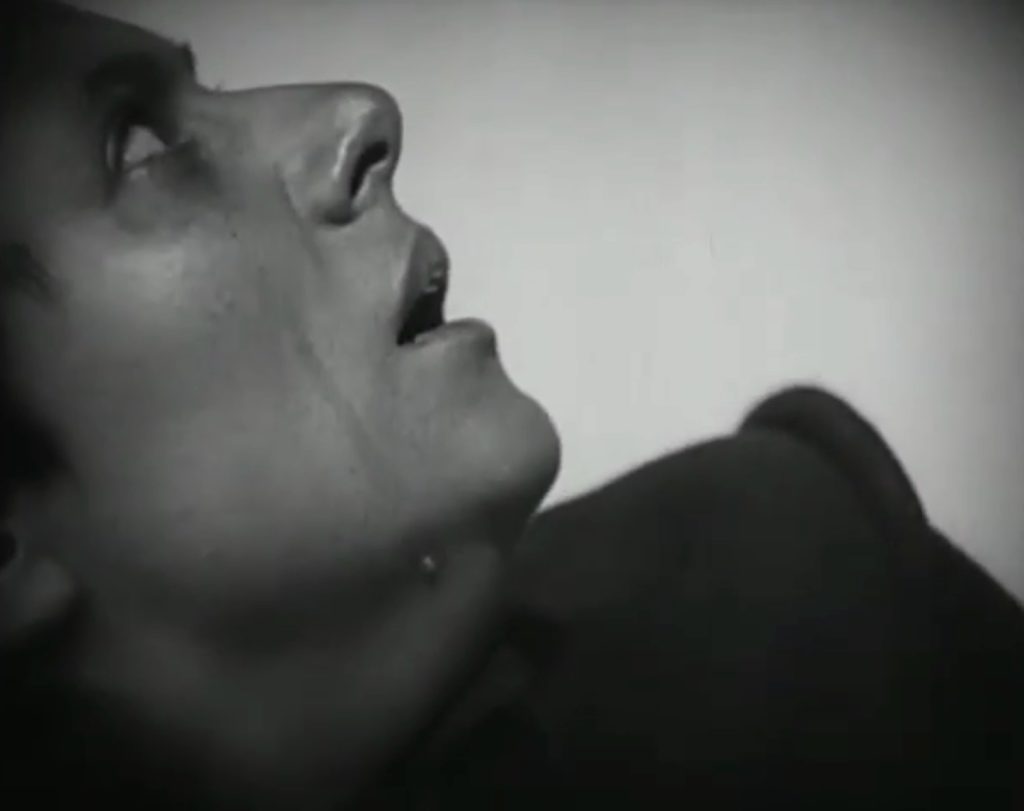


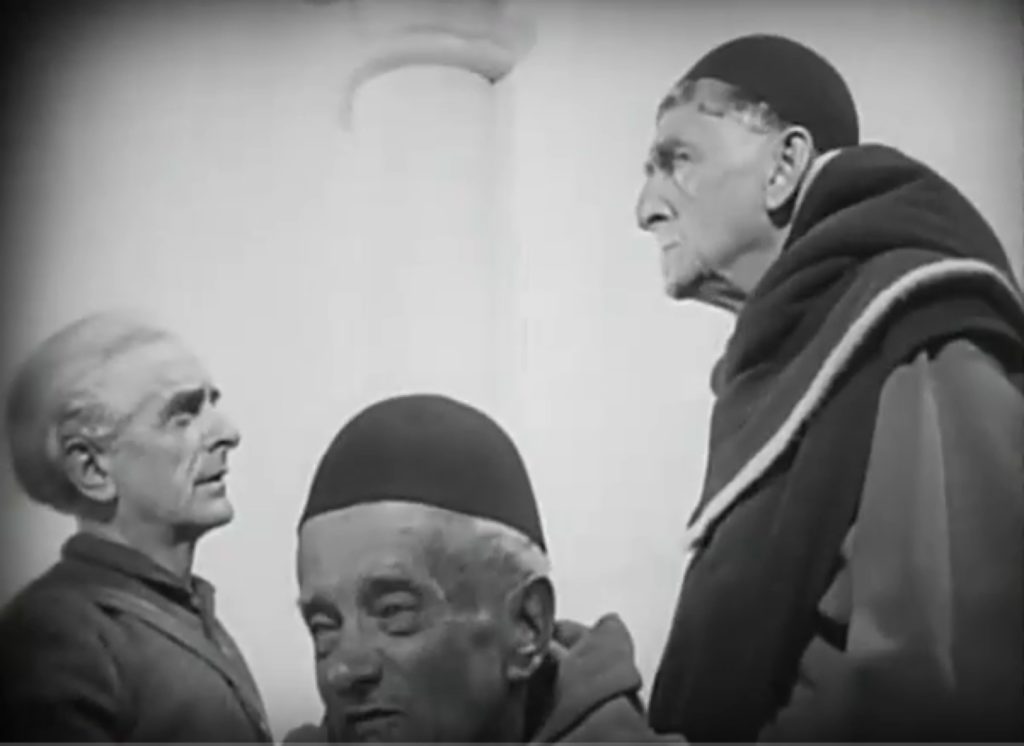
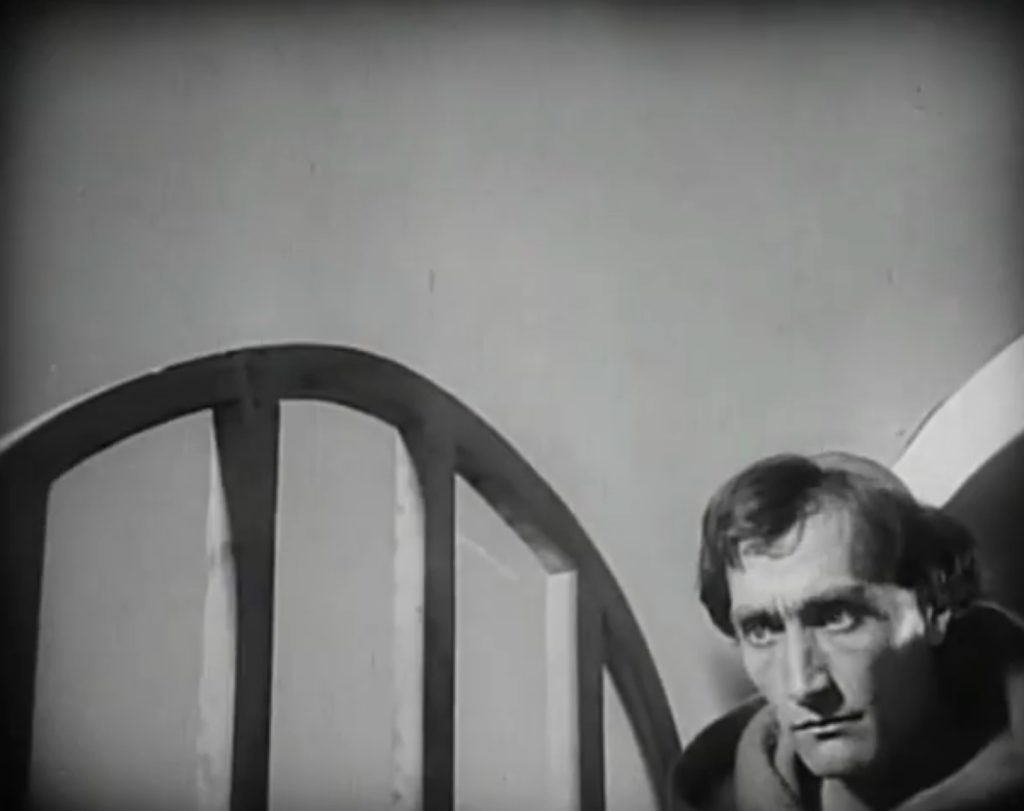
Carl Theodore Dreyer, The Passion of Joan of Arc (1928)
In the beautiful Three Colours Trilogy Blue, Blanc and Rouge (US Link) by Krzysztof Kieslowski the colours dominating the background are used to symbolize the mood of the protagonist. Each of the three movies has it’s own colour and theme. The colours, resemble the colours of the French flag and symbolise the ideologies that drove the French revolution; Liberté, égalité, fraternité which translates as liberty, equality and fraternity.
The atmosphere, mood and colour is all present all absorbing. This concept uses the law of simplicity in all its facets. A beautiful method with some stunning narrative impact.
The symbols work their magic but by ‘manipulating’ the background giving it a conformity in these symbolic colours Kieslowski makes the environment into a whole. Giving the protagonists not only a clear context but giving the surroundings, the ‘world’ the role of the antagonist in the story….
The movies are heavy with these emotions. Colour symbolics are stretched to their max without losing their meaning, giving the film a wide emotional range. In the trilogy, “Blue” is the anti-tragedy, “White” is the anti-comedy, and “Red” is the anti-romance. Film critic Roger Eberts remarks.
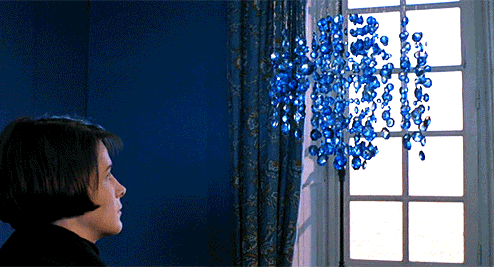

Blue is about grief, loss, despair, being alone, the painful balance between fate, the freedom to choose your own path, finding yourself and obligation.

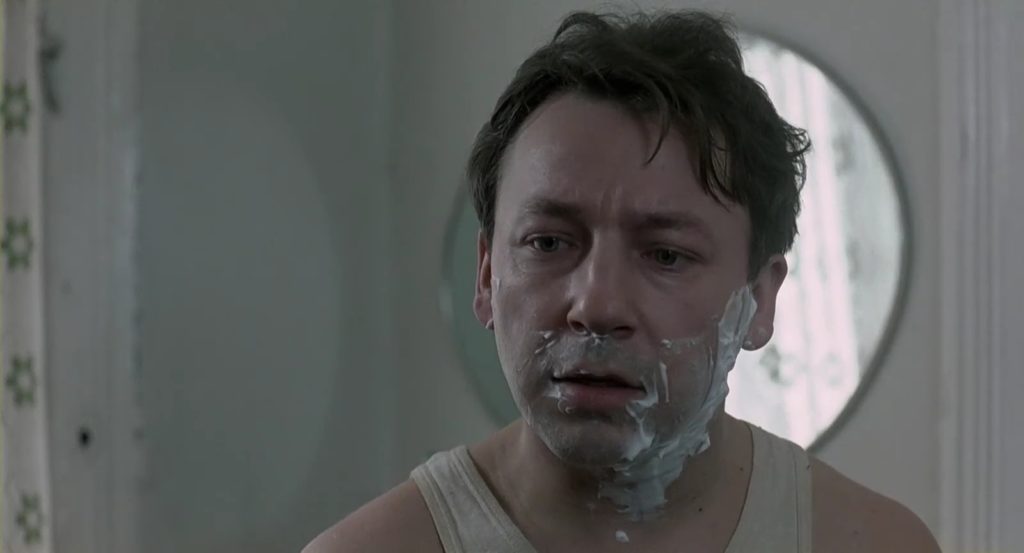
Blanc is about innocence and new beginnings, marriage, disappointment, heartlessness, hopelessness, opportunity and revenge; equality in marriage or the lack thereof and the consequences…


Rouge is about life (and death), love, passion, unfulfilled longing, judgment, acceptance and warmth.
Symbols can be a powerful tools in any type of narrative but with them comes grave danger and great responsibility.
Sometimes symbols get so strong we forget they are symbols and confuse them for the real deal. We start using them mindlessly, recycling them until they become meaningless and cliche, lifeless shortcuts, zombies…
Unfortunately the use of mindless cliches does not only harm your story… Cliches, find there way easily into character design. The strong white male hero, saving the damsel in distress. Preferably blond and wearing pink so she could not possibly have saved herself. Nerds being ugly wearing glasses and turned ‘pretty’ and better going for contacts, people in wheelchairs either helpless or an amazing role model, the dumb fat guy, evil villains with bad teeth and uni brows, people of colour thieves and hoodlums, Asian sexy martial artist, Indian cabdrivers… These choices hurt people, they keep prejudice alive making people blind for the reality that is so different.
This problem was already noticed and fought in the early Hollywood days. In 1941 a group of actors formed The Actors’ Laboratory Theatre. A politically active theatre company and acting school which “prided itself on having opened its doors to students of all races.”
Sadly these ideas got drowned in the fear of communisms and many actors and writers with the same convictions got blacklisted and were boycotted.
The then most famous but now almost forgotten actor blacklisted was John Garfield, who run his production agency. He had fought to get black actor Canada Lee cast in the role of a boxing champ in his boxing movie Body And Soul (1947) (US Link) directed by Robert Rossen (an inspiration for Sorcesese’s movie Raging Bull (1980) (US Link)). When he was asked in a production meeting; “Why you don’t you just avoid any trouble and make the champion white.” His answer was short and sweet: “Fuck you!”.
Although Body & Soul was a massive hit and won Oscars an FBI informant filled a rapport containing a negative report of the movie, which they denounced for showing a “noble black man” while portraying the “rich and successful man in a bad light”.

Canada Lee in Body & Soul (1947)
The fact that the Hollywood was the first to be subjected to this communist witch hunt shows an understanding of the influence the entertainment industry has on the lives and opinions of ‘the audience’.
This day and age knows lots of great female and Afro-American actors. But type casting keeps being a problem for both actors and spectators.
Since 2015 the #oscarssowhite tag generated the attention of the public. In 2015 and since then all 20 actors nominated in the lead and supporting acting categories where white.
In the Academy Awards’ 88-year history, only 14 black actors have won acting Oscars — the first was Hattie McDaniel for Gone with the Wind in 1940 (US Link), and the last (at the time of this writing) was Lupita Nyong’o (who was born in Mexico) for 12 Years A Slave in 2014 (US Link). The winners’ pool is even shallower for other minorities. A mere five Latino actors have won prizes (most recently, Benicio Del Toro for Traffic in 2001 (US Link)), as have just three actors of Asian descent (the last was Haing S. Ngor in 1985 for The Killing Fields (US Link)). Similarly, the only indigenous acting winner in history is Cherokee-Irish actor Ben Johnson (for The Last Picture Show in 1972).
But the problem does not lay at the awards. Giving actors of colour an Oscar because someone of colour should be represented in the award winning troupe is degrading and can (and will) give the opposite effect: ‘Oh, but he or she only got the award because of their colour’…
On the boycott following the second year with all white Academy Award nominee Whoopi Goldberg remarked in an interview on ABC’s The View: “The issue is not the Academy, Even if you fill the Academy with black and Latino and Asian members, if there’s no one on the screen to vote for, you’re not going to get the outcome that you want. […] You wanna boycott something? Don’t go see the movies that don’t have your representation. That’s the boycott you want.”
The problem lies and should be solved way earlier; scripts, movies and all other graphic narratives should be more diverse and represent everyone.
Storytellers should provide equal opportunity for all types and step away from typecasting and cliches. As a storyteller you have tremendous power. Use it wisely!
“We don’t have compassion unless we see stories through other people’s eyes, and we need a broader range of storytellers. They have to be women, people of colour, LGBTQ. The storytelling has got to be more balanced,” Rees Witherspoon states in O, the Oprah Magazine of March 2018.
Rees Witherspoon’s speech when receiving Glamour Woman of the Year Award 2015
“Quite frankly we just can’t see the same films from the same group of people over and over again and expect society to change.” she stated in Wall Street Journal Magazine when she won the Entertainment innovator of the year 2017. By then she had been working on the representation of women in movies for 5 years. Producing movies that showed women in strong roles changing how they are perceived slowly but steadily.
When I was asked to draw a campaign on healthy living for kids I drew a girl on a skateboard and a boy on skates. They loved the style, the content, the narrative, but they asked me to switch their gear: ‘girls don’t ride skateboards’… I told them ‘this one does’. Explaining that not everyone fits their ‘profile’ adding that it’s important kids learn that too. They agreed…
Gemma Plum, Centrefold Game & Comic Health department Rotterdam (2017)
Thanks for visiting 🙂
Please let me know if you have some other great examples where this technique is used!
In case you’re wondering about why I’ve asked xxxxxxxxxx & xxxxxxxxxx for permission to use their work and none of the other artist; I’m using all artwork under the Fair Use Law, but decided to let all living artists (who are not presented by major bureaucratic agencies) know I appreciate their work and use a small part of it in this context on this blog.
This is the fifth in a series posts or articles on Gestalt and Visual search tips and tricks for visual storytelling and graphic communication in my get-into-details research.
If you think you’ve got these you might want to check out the upcoming series on priming, details in composition and their effects on the main story ingredients; character setting and plot.
Curious on why I got into this topic check out my earlier post or articles:
Readers Tips and a Revived Darling:
Stereotype casting and discrimination are important topics that I found necessary to mention when talking about the use of symbols in graphic narrative. Of course a lot more has been said about it and a lot more will be said about it. If you’re interested in the subject I could recommend some articles and documentaries (in random order):
In 1973 British feminist film theorist Laura Mulvey wrote a famous essay Visual Pleasure and Narrative Cinema (published in 1975 in the influential British film theory journal, Screen) Using psychoanalysis she investigates ‘where and how the fascination of film is reinforced by pre-existing patterns of fascination already at work within the individual subject and social formations’.
Samuel King about the importance of (attention for) positive role models in his slam poem What I Wasn’t Taught in School #WhatIWasntTaughtInSchool
Spike Lee (who made made 38 films as, as a director, and wrote 22 films) on his early work talking about this subject.
The HuffingtonPost article Everything You Know About Obesity Is Wrong (published on September 19, 2018) is a must read if you’re thinking of having some diversity in body size in your stories. (As Sarah Winifred Searle pointed out via twitter.)
